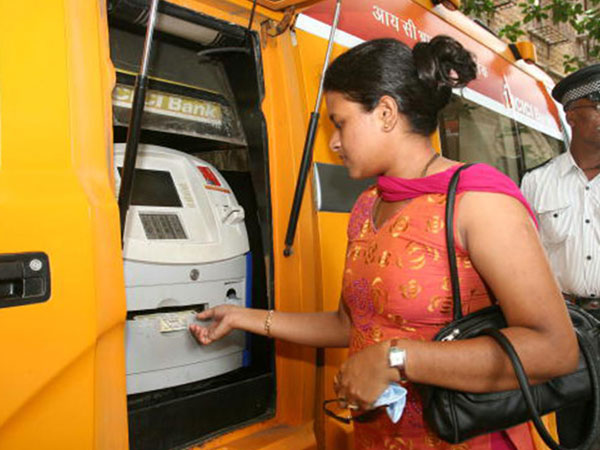
Over a year after demonetisation digital transactions are on the rise though under the cloak of digital transaction it is cash withdrawals, which is pushing up usage of debit cards at automated teller machines instead of bank branches, as they slap fees on such transactions.
Debit card usages that accounts for 90 per cent of the total card related payment and settlement systems, continues to hold dominant position, according to the data released by Reserve Bank of India for September 2017.
Debit card usage across automated teller machines and point of sales stood at Rs 2.78 trillion in September compared with Rs 2.71 trillion in previous month and Rs 2.62 trillion in July, RBI data showed.
However, debit card usage at ATMs alone rose to Rs 2.42 trillion from Rs 2.35 trillion in August and Rs 2.27 trillion in July.
Bank account holders stepped up their frequency of ATM visits following lenders move to penalise them for visiting branches.
Though lenders introduced several measures, including limiting the maximum amount and number of withdrawals in a month, for account holder withdrawing cash to complete financial transactions continue to be the most preferred use for debit card.
A holder is allowed to withdraw Rs 100,000 a day from local branch. For cash withdrawal at ATM, the limit varies between Rs 40,000 and Rs 200,000 depending open type of card.
To be sure, usage of debit card at point of sale (PoS) machines increased from Rs 345.68 billion in July to Rs 366.29 billion in September, data showed.
Other mode of payments and settlement systems, the credit card and point of sale machine also witnessed a pickup, albeit slower than debit card usage to withdraw cash.
Credit card usage also witnessed surge after the government’s demonetisation drive last year.
Spike in card usage is attributable to more preference for digital payments and the constant effort among lenders to discourage usage of cash.
The Indian banking system handled credit card transactions worth Rs 377.76 billion in September compared with Rs 366.03 billion in August while in July, credit card usage totalled Rs 342.15 billion.
The use of credit card at ATMs rose to Rs 3.11 billion in same period against Rs 3.05 billion in August and Rs 2.85 billion in July, indicating borrowing by bank consumers. However, credit card borrowing from ATMs is barely 1 per cent within the segment, analysis showed.
Lenders charge interest rate between 1.5 per cent and 3.5 per cent per month on the outstanding balance. This is because of higher incidence of payment default.
Interestingly, credit card users were on the rise during the first six months of the current financial year while debit card users declined.
Credit card users have grown to 33.34 million compared with 32.65 million in August and 30.37 million in June. Debit card users fell to 819.76 million from 867 million in June 2017. However, there is increase in debit card issuance in last three months.
Meanwhile, the mobile payment applications popularly known as ‘mWallet’ managed to mark their presence in a current scenario where tech-savvy users are finding ease and comfort in such products.
Usage of mWallet grew to Rs 81.54 billion in September compared with Rs 72.62 billion in August and Rs 74.42 billion in April. The system is facing competition due to the charges attracted by service providers and is strictly popular with urban population.
Credit card, debit card, other payment and settlement tools are in existence in the country for some time now. However, the demonetisation drive and efforts on cash-less transaction is threatening very existence of these tools.
Affirmation to above expectations was provided by the recent remark of Amitabh Kant, chief executive officer of Niti Aayog.
“India will make credit cards, debit cards and ATMs technologically redundant in next three-four years and we all will be using mobiles for doing many transactions,” Kant said at Amity University Noida campus where he was felicitated with an honorary doctorate degree.
He further said with India being a country where 72 per cent population is below 32 years of age, it will have an advantage over other regions like the US and Europe in terms of demographic dividend.
Digital banking is gaining importance given the strong potential and positive yield on returns.
According to Infosys study of ‘innovation in retail banking’ report, more than 50 per cent of respondents expect to see a measurable return on investment from their investment in innovation in one-three years.
— TickerNews Service



